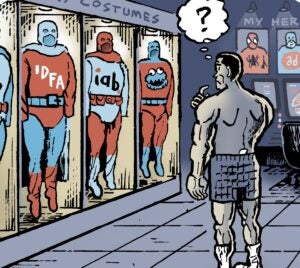 PubMatic announced its new Data Firewall product which the company says enables “publishers [to] get visibility into 3rd party companies that are tracking the publisher’s audience via pixels or cookies and causing data leakage.” Furthermore, the product provides the ability to view revenue by third-party provider (such as an ad network) according to the release. Read it.
PubMatic announced its new Data Firewall product which the company says enables “publishers [to] get visibility into 3rd party companies that are tracking the publisher’s audience via pixels or cookies and causing data leakage.” Furthermore, the product provides the ability to view revenue by third-party provider (such as an ad network) according to the release. Read it.
PubMatic CEO Rajeev Goel discussed the new product and its implications.
AdExchanger.com: Wait, in your last piece, I thought it was not about “data leakage,” – but now it appears that it is?
RG: Data leakage, audience data theft, too much pixel dropping behind the publisher’s back – call it what you will, but it is a huge problem. My point in the piece you’re referring to was that “leakage” isn’t the best word to describe what is happening because data isn’t leaked from the publisher, it’s being taken from the publisher.
However, we recognize that “data leakage” is what the industry at large seems to be calling it, and we’d rather fix the problem than worry about re-naming it. I wouldn’t be opposed to someone else renaming it though.
Maybe we should conduct a poll at our Ad Revenue 2010 conference on Oct 7; Doug Weaver (Upstream Group) is hosting what I believe is the first ever panel completely dedicated to the publisher data leakage subject. Or maybe people will leave comments here with suggestions.
Regardless of whether or not “data leakage” remains the industry’s term of choice or not, I’ll still think it sounds nasty.
How do you recommend publishers evaluate 3rd party relationships? Is it strictly CPMs?
I don’t think it is all about CPMs. There are a lot of smart and well-respected companies leveraging publisher audiences in ways that greatly benefit publishers. Publishers should take into account several factors when evaluating relationships, including whether or not there is trust and mutual respect.
That said, the ratio between revenue contribution and pixel dropping is arguably the most important factor in deciding how much pixel dropping is too much.
Our Data Firewall product shows both who is dropping pixels at what frequency, and more importantly, what that 3rd party’s revenue contribution is to the publisher. Because not all pixel dropping is a bad thing, publishers need both pieces of information in order to decide if the value trade-off is worth it.
Furthermore, Data Firewall alerts publishers when pixel dropping occurrence in relation to revenue contribution is overly disproportional, which helps publishers know when they need to talk a closer look at the value of their relationships. But ultimately we’re just providing the publisher the information they need to evaluate 3rd party relationships.
Can you discuss the transition that publishers are making today? Do they understand audience-based buying/selling versus placement?
Gaining better control of their audience data is absolutely key for publishers to remain competitive in the online advertising space in the very near term.
Buyers want to target very fine-grained audiences. And they want to do it in the confines of a web site or a publisher brand that makes sense for the advertiser. We are in the early innings of this – some publishers get it and others don’t. From my conversations with publishers, most of them understand how the ecosystem is changing, and some are moving quicker than others to re-tool their sales platforms, processes, and teams for the new environment.
Many publishers, and most publishers PubMatic work with, are transitioning to sell in an advanced technology world of Real-Time Bidding (RTB) and DSPs. They’re also transitioning to multi-platform sales of mobile, video, traditional display, etc. in addition to offline media.
The good news is that all of this change means opportunity. I believe we are on the brink of a seller’s market in online advertising for two reasons. There is an unbelievable amount of new media consumption that is happening with smartphones, iPads, laptops, etc. Equally important, there are a lot of new dollars pouring into the display advertising ecosystem because of all of the innovation going on, particularly in buy-side tools.
By John Ebbert













